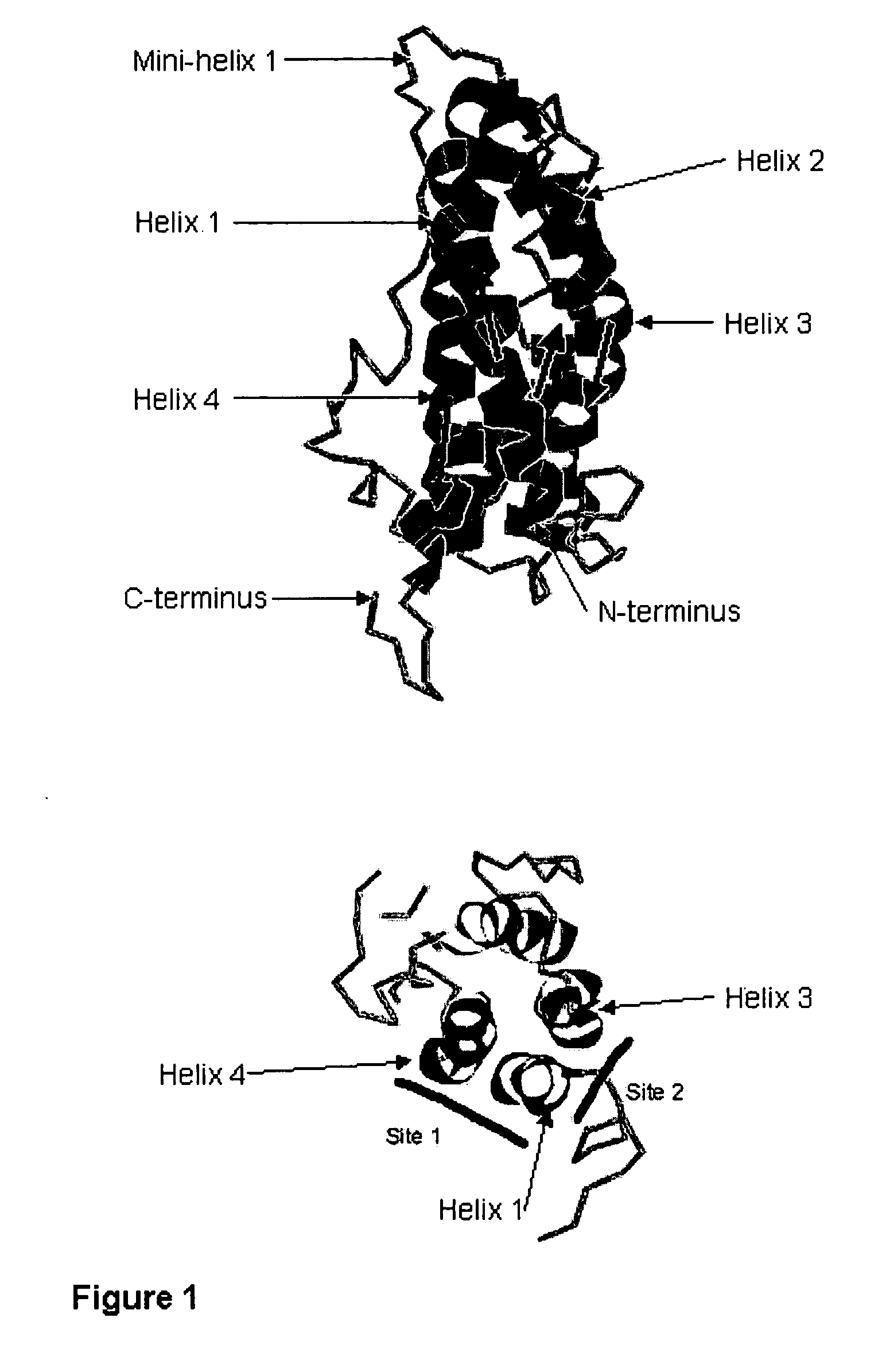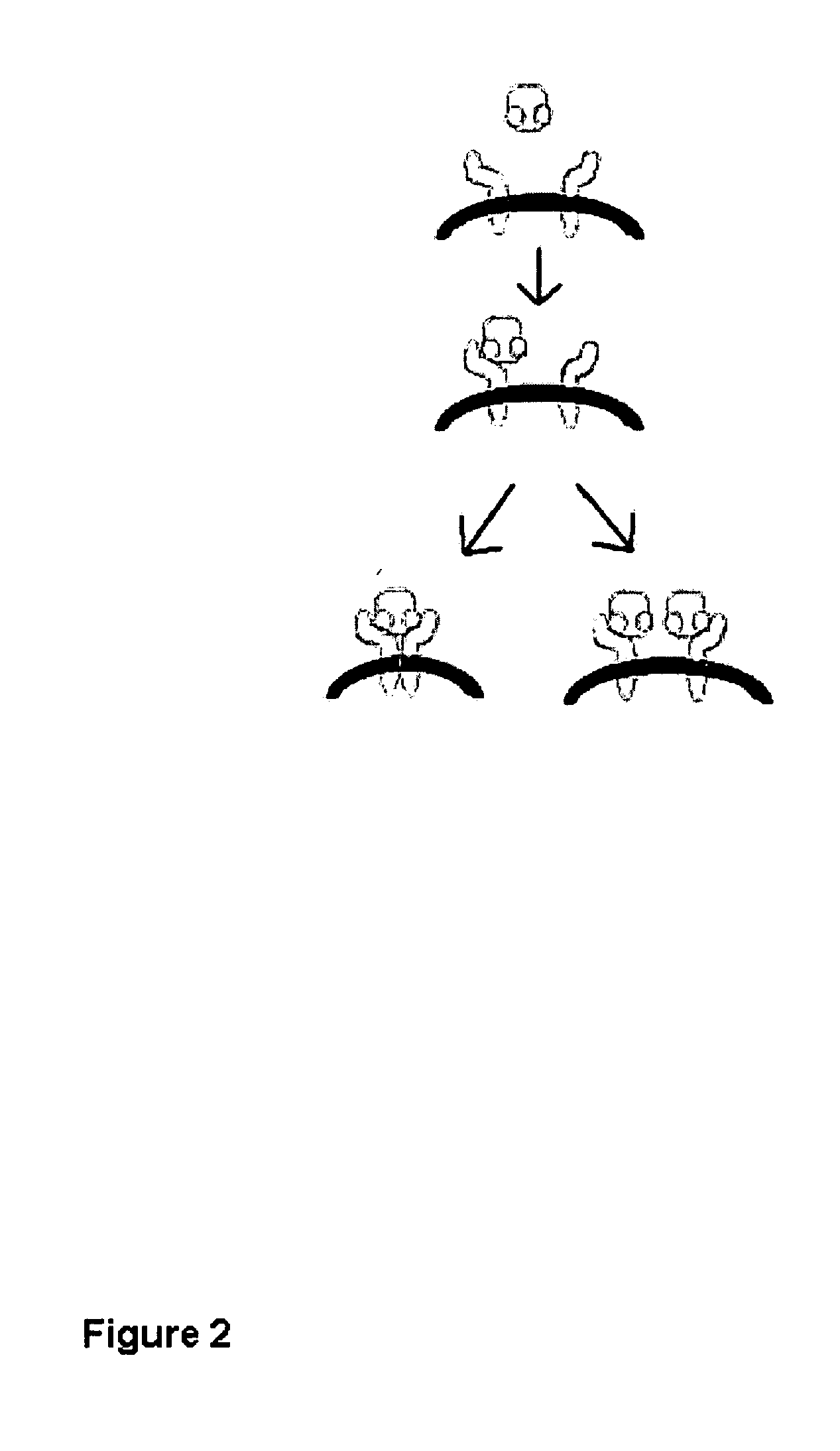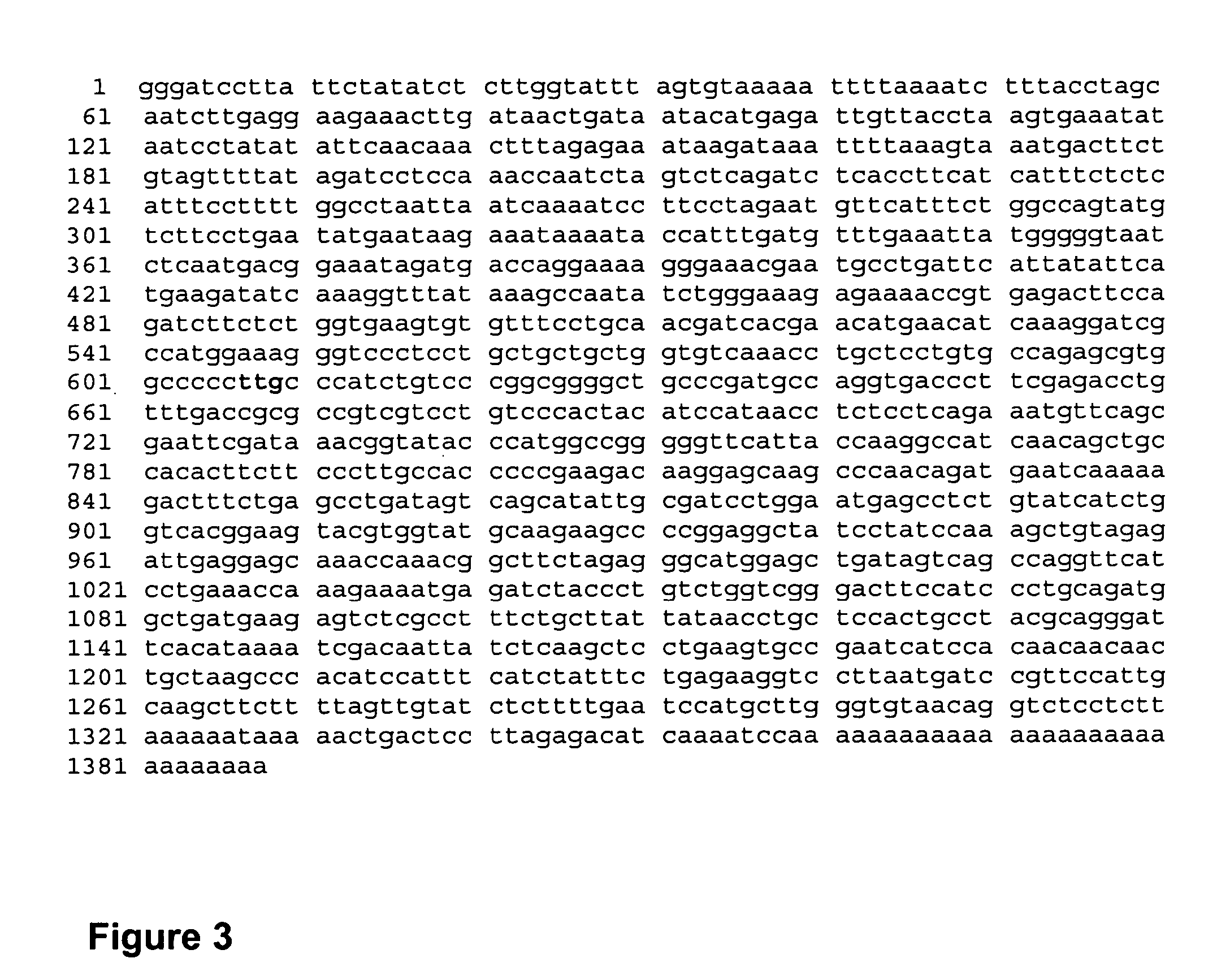Antagonists for human prolactin
a technology of prolactin and anti-prolactin, which is applied in the field of anti-prolactin, can solve the problems of increasing long-term survival or reducing morbidity, metastatic disease has been refractory to nearly all chemotherapeutic regimens tested, and achieves little or no agonist activity, easy measurement
- Summary
- Abstract
- Description
- Claims
- Application Information
AI Technical Summary
Benefits of technology
Problems solved by technology
Method used
Image
Examples
example 1
Mutant Human Prolactins have Tertiary Structures Similar to Wild-Type Protein
[0159] A study was designed to discriminate between two models of hormone mechanics: an induced-fit model (as described in this application), or a model with constitutively-active and independent-sites (the model currently described in the literature; not an induced-fit model). The experimental hypothesis was that if the first or second site was chemically altered to reduce or eliminate function, then it should still be possible to discern binding at the other site (the independent-binding site model). If data could not support the independent-binding site model, then the null hypothesis of an induced-fit model would be accepted.
[0160] The approach was to prepare three human prolactins by recombinant DNA technology, site-directed mutagenesis, and expression of the recombinant proteins in E. coli. One of the prolactin mutants had a mutation within site 1 (lysine 181 mutated to cysteine; K181C), one had a m...
example 2
Biological Functioning of Prolactin Mutant Proteins Show that Lactogenic Receptor Binding at Site 2 Requires Binding at Site I (Demonstrates an Induced-Fit Model)
[0166] Binding experiments were monitored by surface plasmon resonance on a BIACORE™ 3000 instrument. The design of these instruments requires one of the binding components to be covalently attached to a microfluidic optical chip surface. This approach was taken to allow multiple extracellular domains of the human prolactin receptor to bind the fixed ligand. Subsequently, the extracellular domain of the human lactogenic receptor is flowed across the chip surface at a prescribed concentration and for a defined duration. Binding of human prolactin and the receptor that occurs on the protein-containing side of the microfluidic optical chip was observed by an optical bench located on the back of the chip surface. In the experiments, we covalently attached the human prolactins to the chip surface through a dextran polymer linke...
example 3
Kinetic Binding Experiments
[0170] Time-dependent binding kinetic provides a second set of data that accurately describe both the rates and strength of prolactin-receptor binding. Using the same set of human prolactins bound to the chip (M158C, G129C, and K181C) as described above, we undertook kinetic studies with much lower concentrations of receptor being flowed over the chip surface. One study used several concentrations between 50 and 800 nM of the extracellular domain of the human prolactin receptor and compared the shapes of the receptor binding curves to human prolactins coupled to the chip surface at residues 129, 158, or 181. In FIG. 11, the shapes of these sets of three binding curves can be compared; the kinetics of each binding are substantively different.
[0171] Coupling human prolactin to the chip surface at position 158 shows a complex curve, where site 1 binding dominates the early times in the experiments, but as site 1 binding activates site 2 binding continues to...
PUM
| Property | Measurement | Unit |
|---|---|---|
| Fraction | aaaaa | aaaaa |
| Fraction | aaaaa | aaaaa |
| Fraction | aaaaa | aaaaa |
Abstract
Description
Claims
Application Information
 Login to View More
Login to View More - R&D
- Intellectual Property
- Life Sciences
- Materials
- Tech Scout
- Unparalleled Data Quality
- Higher Quality Content
- 60% Fewer Hallucinations
Browse by: Latest US Patents, China's latest patents, Technical Efficacy Thesaurus, Application Domain, Technology Topic, Popular Technical Reports.
© 2025 PatSnap. All rights reserved.Legal|Privacy policy|Modern Slavery Act Transparency Statement|Sitemap|About US| Contact US: help@patsnap.com



